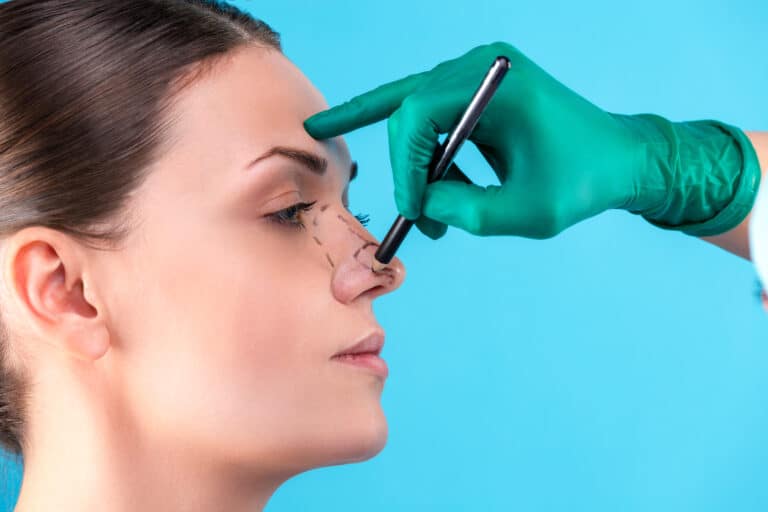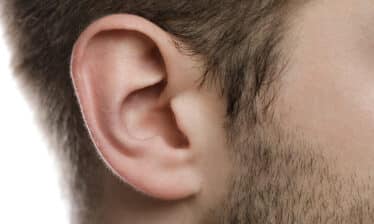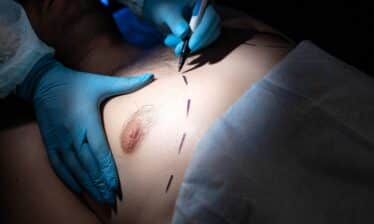Once popular only among celebs and socialites, rhinoplasties or nose jobs have now become commonplace cosmetic procedures. Read on to learn everything you need to know about the rhinoplasty procedure and its types, what it involves, how much it costs, and more.
What Is a Rhinoplasty?
A rhinoplasty, commonly known as a nose job, is a cosmetic procedure for reshaping the nose. In addition to improving physical appearance, a rhinoplasty can be used to correct breathing problems and treat various conditions like birth defects and traumatic facial injuries.1
The main goal of cosmetic rhinoplasty is to boost your self-image by altering the nose proportions to enhance facial harmony. Rhinoplasty can alter the size, shape, and structure of your nose, nostrils, nose tip, and nose bridge by modifying the nasal bone or cartilage.2
A rhinoplasty for cosmetic reasons can only be performed after the nasal bone is fully grown. For girls, this happens around the age of 15, whereas for boys, it can happen a while later.3
What Are the Types of Rhinoplasty and Who Is It For?
There are six common types of rhinoplasty. These include:4
- Open rhinoplasty: In this type, the surgeon makes a small, z-shaped incision on the inside of the nose between the nostrils. This allows the surgeon open access to make minute and precise changes to the nose structure. Because of the incision, there may be a faint scar, but it fades away eventually. This procedure can be used for cosmetic or health reasons.
- Closed rhinoplasty: In this type, the surgeon makes incisions in the nose without disrupting the skin. Because of this, there’s no visibility into the nasal bone or cartilage. But the swelling and healing time is reduced, and there’s no scarring. This procedure is useful for minor cosmetic corrections.
- Revision rhinoplasty: This type is for correcting or further improving the results of a previous nose job. It’s mainly used for cosmetic enhancements or for fixing functionality issues that were not or could not be addressed in the previous procedure.
- Filler or liquid rhinoplasty: This is a minimally-invasive procedure in which the surgeon uses fillers of various materials like hyaluronic acid instead of stitches to reshape the structure of the nose. Liquid fillers can be used to decrease the size of the nose and fix tiny asymmetries or indentations without resorting to surgical intervention. However, the effects aren’t permanent and usually last for about a year.
- Tip rhinoplasty: This is a less invasive procedure focused on the nose tip and does not involve any intervention to the nasal bone. Hence, the recovery time is much faster than other types of rhinoplasties.
- Septorhinoplasty: This procedure is usually not for improving the external appearance of the nose but for correcting the position of the nasal septum. It’s useful in cases of septum deviation where the surgeon aligns or repositions the nasal septum to the center of the nose. This can improve the functionality of the nose and help in relieving breathing difficulties.
How Much Does a Rhinoplasty Cost?
Nose jobs performed for cosmetic reasons are usually not covered by insurance. However, rhinoplasties necessary for medical reasons like respiratory conditions, birth defects, and traumatic injuries may be covered under your state Medicaid program.
According to the American Board of Cosmetic Surgery, nose surgery can cost anywhere between $2,000 and more than $15,000. This wide range is because plastic surgery prices depend on a variety of factors. To give you a clearer picture, here’s a rhinoplasty cost breakdown:6
- Medical tests: Before you undergo surgery, you may need to take many tests to assess your health, such as blood tests (to check for other diseases or risk factors), pregnancy tests (to minimize anesthesia risk), and chest X-rays (if you’re a smoker or have a respiratory condition). You may also need radiological exams like CT scans before and after surgery so that your surgeon can plan the treatment and later monitor the success of the treatment. This cost can vary depending on your health condition and the complexity of your procedure.
- Hospital or facility fees: Surgical facility fees can range between $1,000 and $3,000, depending on your zip code. Hospitals might also be more expensive than private clinics.
- Consultation fees: This amount usually ranges from $75 to $250, depending on whether the same surgeon performs the procedure and the equipment (like a special camera) utilized to plan and customize your treatment.
- Surgeon’s fees: This is your biggest expense, and the price mainly depends on the location, educational qualification, and professional credentials of the surgeon. On average, most surgeons charge between $8,500 to $12,000 for a rhinoplasty procedure.
- Anesthesia fees: Anesthesia providers usually charge between $800 to $1,200 for nose surgery. This price depends on the location and professional credentials of the provider, the duration and complexity of the procedure, and the type of anesthesia (local or general) you opt for.
- Medication expenses: Before and after the procedure, your doctor may prescribe many over-the-counter medications like painkillers and anti-inflammatory drugs, which could add to your expenses. If you develop an infection or any other complications, expect the medication and consultation costs to increase even further.
- Miscellaneous: This could include any unplanned or additional expenses like post-procedure garments or equipment, which could shake up your budget.
What Are the Risks and Alternatives for Rhinoplasty?
Rhinoplasties are generally safe and easy to perform, and the success rate is high. But recovery can be slow, and side effects like numbness and swelling can linger for months.7
In addition to the usual surgical risks like infection, bleeding, and anesthesia-related side effects, getting a rhinoplasty can increase your chances of experiencing the following:8
- Nosebleeds
- An asymmetrical nose
- Scars
- Breathing difficulties
- Loss of sensation or function in the nose
Furthermore, if the initial surgery doesn’t give you the look you desire, you may need a second surgery. But this will have to wait until your nose is completely healed from the previous procedure, which can take up to a year.9
If you’re not convinced about getting a nose job, you could consider some cosmetic alternatives like a non-surgical facelift or opt for dermal fillers in the nasal area.
Final Thoughts
Getting a nose job for cosmetic reasons is a personal choice. This post aims to help you gain a better understanding of what this involves and how much it will cost you so that you can make an informed decision.
Check out My Body Treatment today for more interesting information on cosmetic procedures, beauty treatments, and other useful body sculpting tips.
SOURCES:
- Healthline: “Rhinoplasty.”
- Healthline: “Rhinoplasty.”
- Healthline: “Rhinoplasty.”
- Drphilipmiller.com: “Types of Rhinoplasty.”
- Good Rx Health: “How Much Does a Nose Job Cost?”
- Good Rx Health: “How Much Does a Nose Job Cost?”
- Healthline: “Rhinoplasty.”
- Healthline: “Rhinoplasty.”
- Healthline: “Rhinoplasty.”





